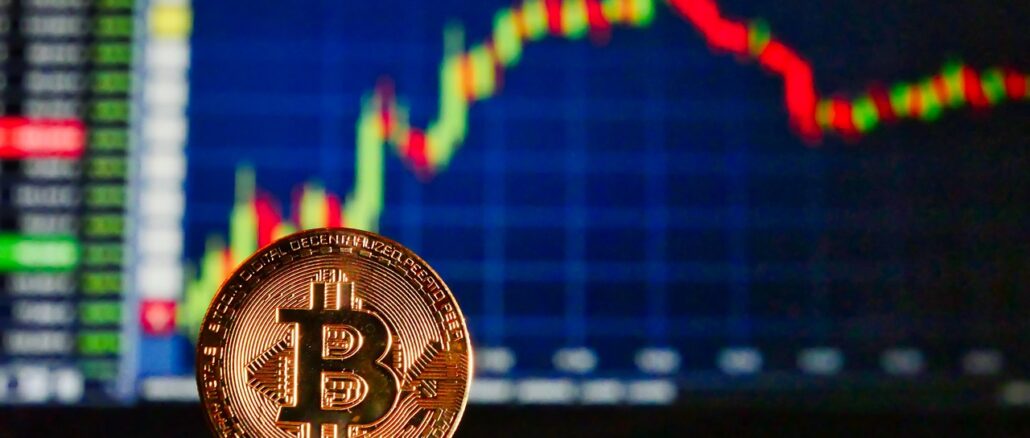
Bitcoin, the pioneering cryptocurrency, offers two primary methods to generate returns: mining and buying and selling. Each method gives wonderful dangers and rewards, which are vital for potential investors to understand. When evaluating the risks and rewards of Bitcoin mining versus trading, using a platform like Visit https://fbc-edge.com/ which can provide seamless transaction experiences for traders. Connecting with such platforms may enhance your trading strategy and efficiency.
Bitcoin Mining: Risks and Rewards
Rewards:
Block Rewards:
Bitcoin mining entails validating transactions on the blockchain by solving complex mathematical puzzles. Successful miners get hold of block rewards, which include newly minted Bitcoins and transaction fees from the transactions they validate. As of now, the praise for mining a block is 6.25 BTC, which may be great, particularly while Bitcoin costs are excessive.
Network Contribution:
Mining contributes to the security and integrity of the Bitcoin community. Miners play a vital role in maintaining the decentralized nature of Bitcoin, which can be a profitable issue beyond economic profits.
Risks:
High Initial Investment:
Mining requires great in-advance funding in specialized hardware known as ASIC (application-specific integrated circuit) miners. These machines can be high-priced, and their fee can depreciate quickly as the era advances.
Electricity Costs:
Mining operations consume a considerable amount of strength, leading to excessive ongoing fees. The profitability of mining is closely tied to power fees and the performance of the mining device.
Difficulty Adjustment:
The Bitcoin network adjusts the issue of mining approximately every week based totally on the total network hashing power. As extra miners join the community, the issue will increase, making it harder to mine new blocks and potentially decreasing profitability.
Price Volatility:
Bitcoin’s fee can be notably unstable, affecting mining profitability. A drop in Bitcoin’s rate can reduce the fee of block rewards and transaction expenses, making mining less financially feasible.
Bitcoin Trading: Risks and Rewards
Rewards:
Potential for High Returns:
Trading Bitcoin includes shopping for and promoting the cryptocurrency to capitalize on price fluctuations. Successful traders can obtain full-size returns by means of correctly predicting marketplace actions and executing timely trades.
Flexibility:
Trading offers flexibility in terms of method and funding horizon. Traders can have interaction in diverse techniques, together with day buying and selling, swing buying and selling, and long-term making an investment, relying on their danger tolerance and market outlook.
Leverage Opportunities:
Many trading structures offer leverage, allowing investors to govern large positions with a smaller quantity of capital. While leverage can enlarge returns, it additionally increases the potential for good-sized losses.
Risks:
Market Volatility:
Bitcoin’s price is understood for its excessive volatility, which can bring about fast and sizeable profits or losses. Traders need to navigate those fluctuations and manage their hazards correctly to keep away from big financial setbacks.
Emotional Stress:
Trading can be emotionally taxing, specifically throughout durations of excessive market volatility. The stress to make short selections and manage losses can lead to strain and impact trading overall performance.
Transaction Fees:
Trading platforms normally price transaction prices, which could effect normal returns. Fees may additionally include buying and selling commissions, withdrawal expenses, and other expenses. Choosing a platform with aggressive price structures is critical to maximizing internet returns.
Security Risks:
Trading includes storing and handling digital belongings, which may be liable to cybersecurity threats. Traders must ensure they use steady systems and appoint quality practices for shielding their property.
Comparing the Two Approaches
Investment Requirements:
Mining:
Requires extensive preliminary capital for hardware and ongoing expenses for strength. Mining operations additionally call for technical expertise and system maintenance.
Trading
generally includes lower initial capital and fewer hardware necessities. However, investors need to spend money on buying and selling tools and systems and must have a great knowledge of market analysis and buying and selling techniques.
Income Stability:
Mining:
Provides a greater predictable income move through ordinary block rewards and transaction charges, even though it’s far more concerned with fluctuations in Bitcoin’s price and community difficulty adjustments.
Trading:
Offers the capacity for high returns but comes with better income variability. Profitability relies upon market situations, buying and selling techniques, and the capability to manage hazards effectively.
Risk Management:
Mining:
Risks are related to hardware funding, strength charges, and network difficulty. Effective hazard control includes optimizing hardware efficiency, securing low power charges, and monitoring market situations.
Trading
Involves dangers related to marketplace volatility, transaction costs, and emotional strain. Risk control strategies include setting prevent-loss orders, diversifying buying and selling techniques, and keeping a disciplined approach to trading.
Conclusion
Both Bitcoin mining and trading provide precise opportunities and challenges. Mining affords an extra stable income via block rewards and transaction fees; however, it requires significant upfront investment and incurs high operational prices. Trading offers the ability for high returns with lower initial capital but involves navigating market volatility and coping with emotional pressure. Ultimately, the selection among mining and buying and selling depends on individual preferences, danger tolerance, and financial dreams. Investors have to cautiously don’t forget their assets, knowledge, and lengthy-term targets whilst finding out which method aligns great with their funding method.
